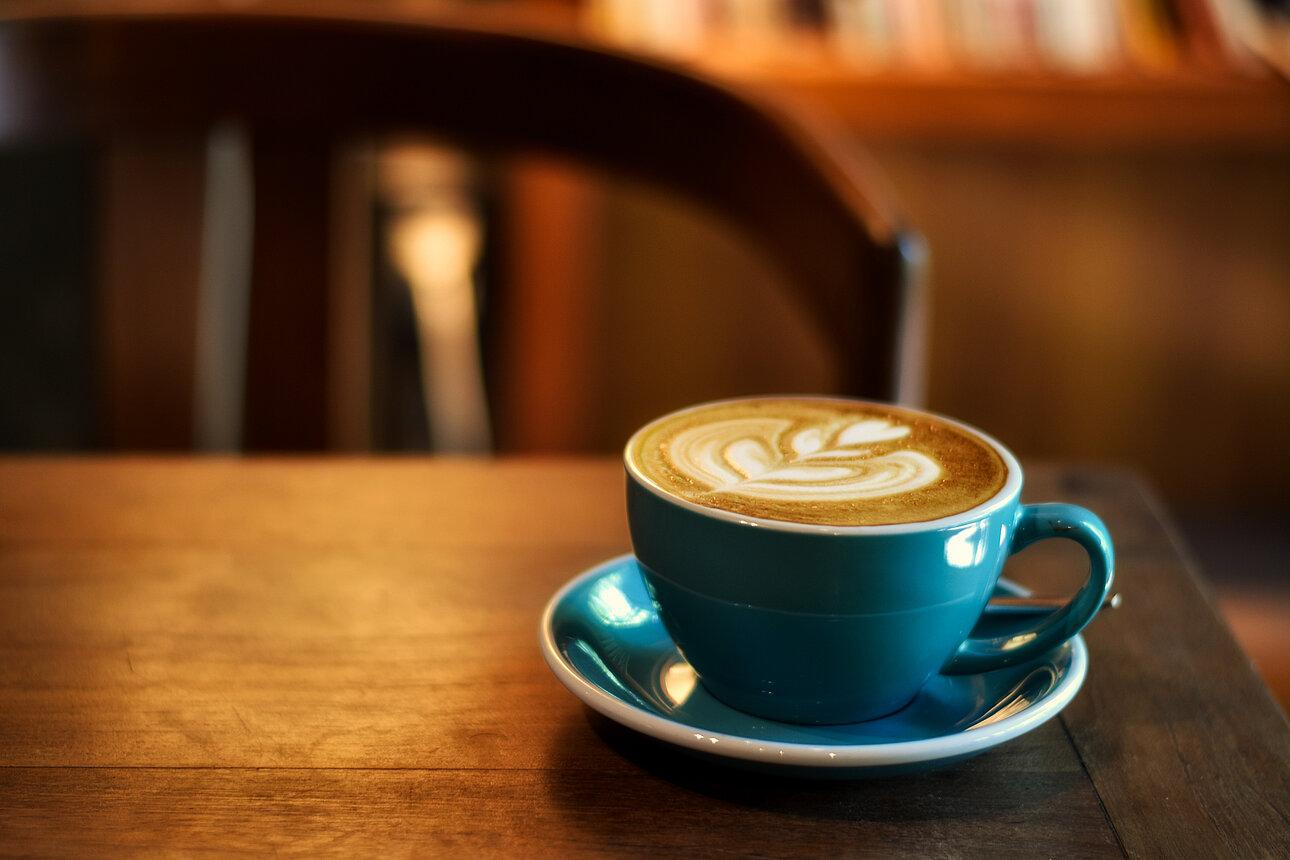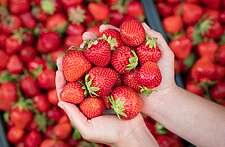Japanese coffee culture is a big deal. The love of coffee has become a vibrant part of life across the island nation, giving rise to seasonal and yearly trends. At Symrise, we’re passionate about the top food and beverage trends and love it when our people get firsthand experience.
Emmanuel Laroche, our vice president of marketing and consumer insights, told us about his time in Japan exploring coffee culture and innovative coffee flavors.
Global Tales of Innovation
Long before Emmanuel visited Japan, he’d heard of the famous coffee vending machines. He lived in Europe for a while, working in the food industry and hearing about the latest innovations across regions and nations. He was fascinated by the idea of putting a coin into a vending machine and receiving hot coffee.
Japan first got the beverage vending machine back in the 1960s, but the current model selling both hot and cold beverages didn’t arrive until a decade later. When management and operation shifted from private citizens to companies in the 1990s, vending machines soared to new heights. Nowadays, there is one vending machine in operation for every 23 residents. That’s a lot of vending machines ready to present hot and cold food and beverages!
Japan’s Coffee Culture
Emmanuel told us that when he arrived at the Narita International Airport from Newark, New Jersey, he was eager to taste the unique flavors of canned coffee. He slipped a 100-yen coin into the machine and made his selection — at last, getting his first taste of hot coffee from a can. Clearly, Japanese coffee culture starts at the airport.
Most beverages cost between 100 and 200 yen, making the 100-yen coin a convenient payment method for many delicious drinks. This coin was first issued in 1967, helping fuel the canned coffee culture that thrives today.
Beyond the canned coffee craze, there’s a long-established type of coffeehouse we’d be remiss not to mention: the kissaten.
The Japanese Kissatens
A kissaten, which translates to "tea-drinking shop," is a traditional tearoom and coffeehouse found throughout the country. These shops first appeared in the 1920s but took off after World War 2, soon becoming a popular spot to sit with friends and enjoy tea or coffee.
Emmanuel told us how kissatens have changed over the years, focusing on coffee making as an art. From selecting the beans to roasting, grinding, and brewing, shop owners began to perfect the process and set the stage for the third-wave coffee movement.
Kissatens have a cozy vintage or retro feel that contrasts with that of most coffeehouses that opened after the 1990s, which tend to be specialty cafes with a sleeker atmosphere. Today’s specialty cafes practice what the kissatens have been doing for decades, although the cafes stay modern with their tools and technology.
Related: The Latest Coffee Trends
Coffeehouses and New Coffee Flavors
On his trip to Japan, Emmanuel explored the incredible diversity of establishments as he traveled around Tokyo, Osaka, and Kyoto. He sampled numerous styles of coffee from different coffee places — from vending machines and convenience stores to coffee chains and third-wave specialty cafes.
Coffee Chains
Emmanuel discovered that the top coffee chains across Japan are Starbucks, Pronto, Tully’s, St Marc, Excelsior, and Doutor.
He went to Starbucks to see how the chain differed from the American locations. As it turned out, there was a lot to see. Starbucks in Japan offers seasonal drinks, like in the U.S., but the flavors differ. Japanese coffee flavors focus more on matcha, sharper citrus, uncommon add-ons, and varying fruits. Here are several examples:
-
Chocolate Cake-Topped Frappuccino with Matcha Shot
-
Cherry and Chocolate Chip Frappuccino
-
Shaken Watermelon and Passion Tea
-
Key Lime Cream and Yogurt Frappuccino Blended Crème
What did Emmanuel try? The Halloween Red Night Frappuccino. He told us this unique coffee drink had white chocolate brownies blended with a tart and sweet sauce made from cranberries, strawberries, and raspberries. The topping was whipped cream, red berry sauce, and black cocoa powder.
Canned Coffee
Canned coffee is a booming industry in Japan. The most popular canned coffee brands include
-
GEORGIA (Coca-Cola)
-
Fire (Kirin)
-
Wonda (Asahi)
-
UCC (Ueshima Coffee Co.)
-
BOSS (Suntory)
-
Sangaria
-
DyDo
Each company displays its products in a distinctive way, whether with vibrant or variable colors or uniquely shaped and sized cans. The brands offer different blends, with black coffee the most basic. Other popular offerings include regular, strong, low sugar, café au lait, extra caffeine, matcha latte, café latte, and morning shot. The creaminess, sweetness, and aroma depend on the product, varying according to their brewing and bean-sourcing process.
Third-Wave Coffee Shops
Third-wave specialty cafes, often found in big cities, have perfected coffee making. Emmanuel shared his experiences at four of them.
Subscribe to In-sight to receive articles and reports directly to your inbox, CLICK HERE!
Streamer Coffee Company
Address: 1-20-28 Shibuya, Shibuya-ku, Tokyo
Found at the top of the Shibuya district, Streamer Coffee Company has industrial vibes that match the unfussy look of the street. Owner Hiroshi Sawada opened it in 2010 after the success of Sawada, his Chicago café. Emmanuel’s top pick is the Streamer Latte, with its roasted sweet caramel and bitter chocolate flavor. The latte comes in a mug big enough for soup.
The Roastery by Nozy Coffee
Address: 5-17-13 Jingumae, Shibuya-ku, Tokyo
The Roastery, within walking distance of Streamer Coffee Company, has a trendy vibe and upscale location. Emmanuel told us that crossing the Shibuya-Jingumae crossroads was like stepping into another place. As he put it, it was “a Japanese version of Brooklyn.”
The Roastery menu has simplicity at the heart. Guests select from Costa Rican or Colombian single-origin beans. Then, they pick Espresso, Café Latte, or Americano.
Murmur Coffee
Address: Shomen-dori Takasekado, Shimogyo-ku, Kyoto
Kyoto’s Takase River has a long history of transporting rice and sake, but it’s also lined with cafes and restaurants. This is where Emmanuel found Murmur Coffee, a café that quickly became one of his favorites. The café has simple, warm décor, offering breakfast toast and coffee made from six green-bean blends. Guests can customize the blend and then see it roasted and brewed in-store.
LiLo Coffee Roasters
Address: 1-10-28 Nishishinsaibashi, Chuo-ku, Osaka
LiLo Coffee Roasters is a small café in the Amerika-mura district, close to the Shinsaibashi transit station. This quaint establishment offers around 16 single-origin coffee bean varieties. Emmanuel tried the Gibraltar, which followed the style of Dominican Ristretto Espresso. His verdict? Incredibly smooth.
Japanese coffee culture spans large cities and beyond, with unique flavors, exquisite presentations, and impeccable attention to detail. If you’re ready for the latest food and beverage trends, whether in Japan, North America, or elsewhere, contact Symrise today!






